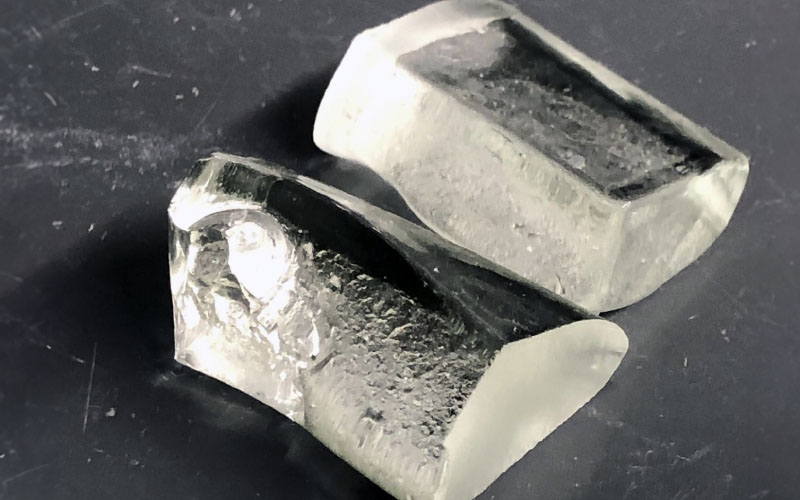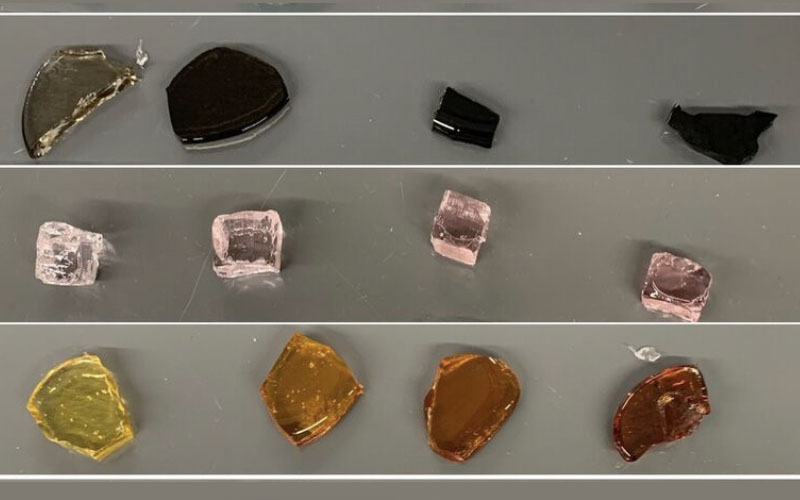By Gracie Mullan
 Image: Adrienne Berard / Penn State
Image: Adrienne Berard / Penn State
One of the largest challenges facing the glass industry today is the immense amount of carbon emissions produced by the production of glass. At least 86 million tons of carbon dioxide is released into the atmosphere each year from glass manufacturing. LionGlass engineered and researched at Penn State – named after the Nittany Lion mascot – has a solution to shaving carbon emissions by half, effectively revolutionizing the glass industry.
This new glass is much easier to produce and is about 10 times stronger than conventional glass. This, coupled with the fact that LionGlass requires minimal energy to produce, rivals Corning Gorilla Glass — the glass on the screen of your iPhone — in resourcefulness.
Our goal is to make glass manufacturing sustainable for the long term. LionGlass eliminates the use of carbon-containing batch materials and significantly lowers the melting temperature of glass.
In a discussion with Penn State, John Mauro, lead researcher on the project, a co-creator of Corning Gorilla Glass and Dorothy Pate Enright Professor of Materials Science and Engineering at Penn State, explained the team’s goal for LionGlass.
“Our goal is to make glass manufacturing sustainable for the long term. LionGlass eliminates the use of carbon-containing batch materials and significantly lowers the melting temperature of glass.”
The most common glass used in household windows and glassware products is called soda lime silicate glass. The glass is made by melting soda ash, limestone and quartz sand. A huge byproduct of this melting process is an immense amount of carbon dioxide, a greenhouse gas.
 John Mauro. Image: Penn State
John Mauro. Image: Penn State
The largest contributor to large carbon output is the energy needed to heat furnaces enough to melt the glass. LionGlass cuts the required temperature by about 300 to 400 degrees Celsius and greatly reduces energy consumption.
The research team recently filed a patent application to begin the process of taking LionGlass to the market and has received interest from customers and manufacturers in the glass industry. According to Mauro, the team is in discussions to conduct a pilot-scale trial of LionGlass, which they hope to achieve later this year.
A glass that is extremely durable, energy-efficient and thin could dramatically increase the opportunity for glass use in healthcare, transportation, communication via fiber-optic glass and more.
The team is now testing and studying how LionGlass reacts to a variety of different chemical compositions. This testing will provide a better understanding for researchers on how the glass could be used around the world in different conditions.
“The next step is to conduct a trial on a continuous melter, which will allow us to optimize the melting and forming conditions of LionGlass while addressing engineering questions related to full-scale manufacturing,” said Mauro.
 Image: Glass International
Image: Glass International
LionGlass is also much stronger than ordinary glass, and is about 10 times stronger than soda lime silicate glass which, according to Penn State, cracks under 0.1 kilograms of pressure. The maximum load of LionGlass has still yet to be found as the research team reached the maximum force possible by the indentation equipment.
“The improved damage resistance of LionGlass would be a great benefit for everyday glass products including glass jars and bottles, drinking glass and windows. It may also prove advantageous in fiberglass-reinforced composites,” said Mauro.
Possibilities of decreasing the size of LionGlass have arisen since the glass is so crack-resistant. A glass that is extremely durable, energy-efficient and thin could dramatically increase the opportunity for glass use in healthcare, transportation, communication via fiber-optic glass and more.
Glass remains to be vital in everyday life and Mauro and his team are determined to find an environmentally friendly solution to glass manufacturing.
“Glass is key for renewable energy generation,” Mauro said. “For example, windmill turbines are made from fiberglass, and photovoltaic solar cells are built on glass substrates. Lightweight glasses will also be key to lower energy consumption related to manufacturing and transportation. In the realm of healthcare, glasses with improved mechanical and chemical properties are used as vials for life-saving vaccines, and bioactive glasses can aid patients with both hard and soft tissue repair.”






